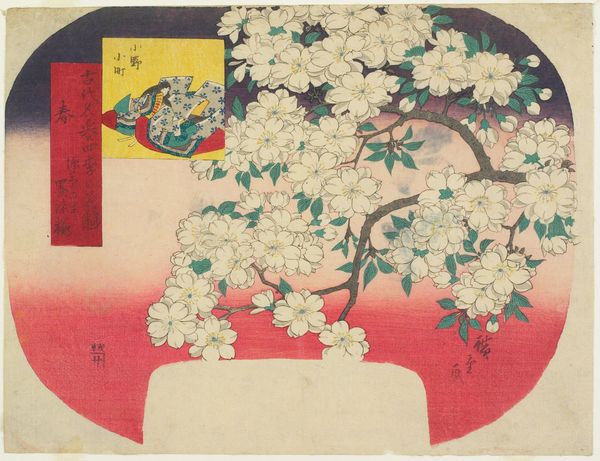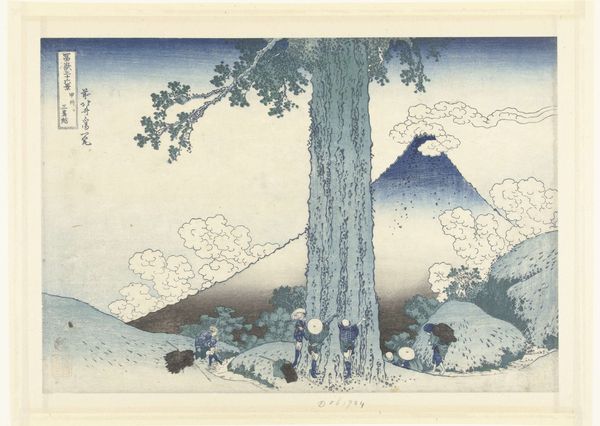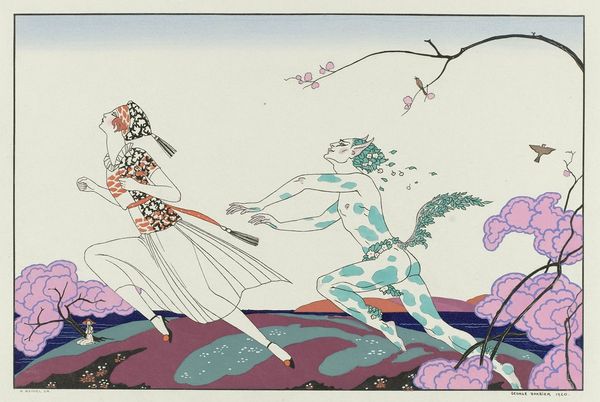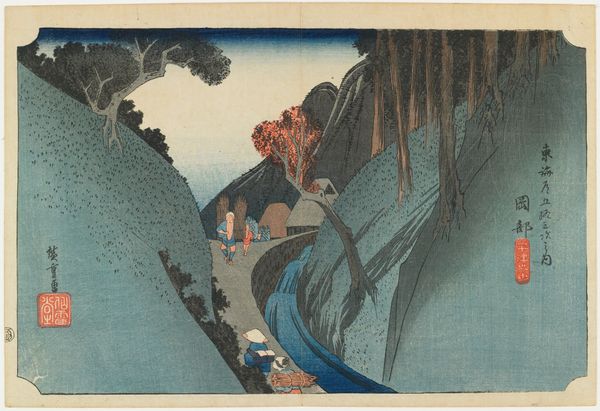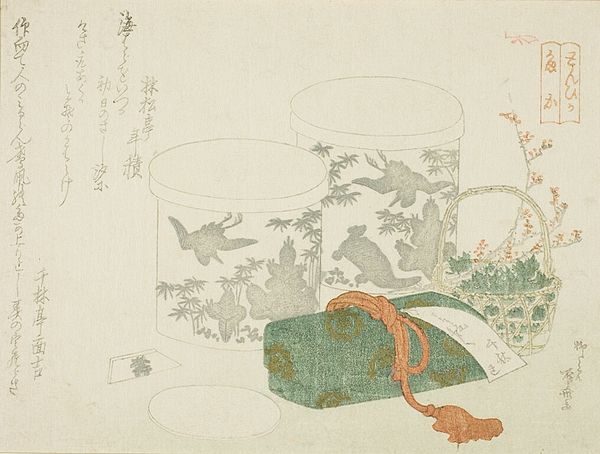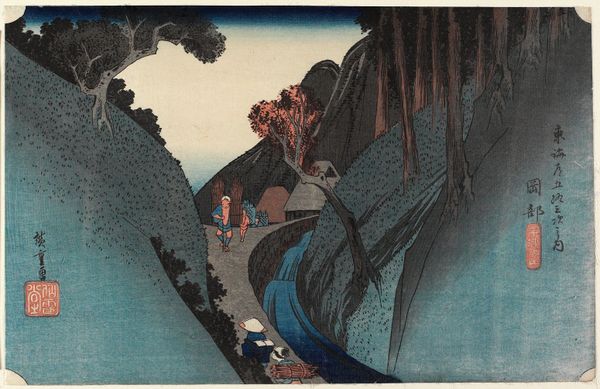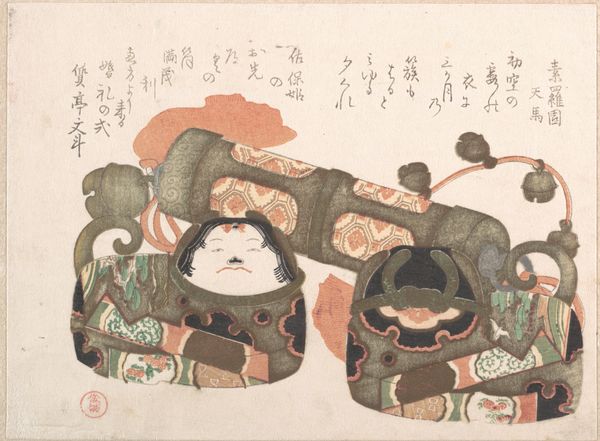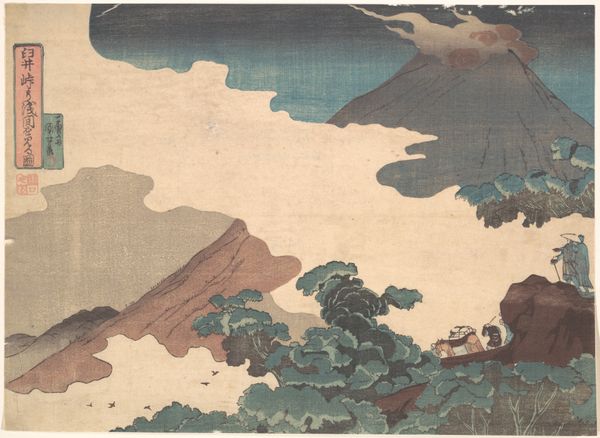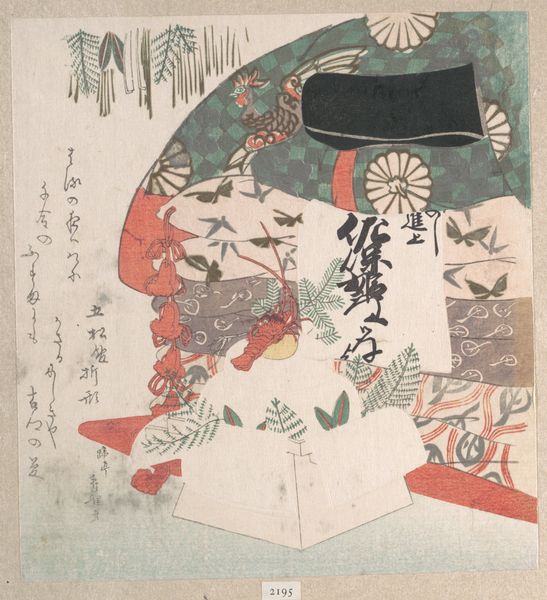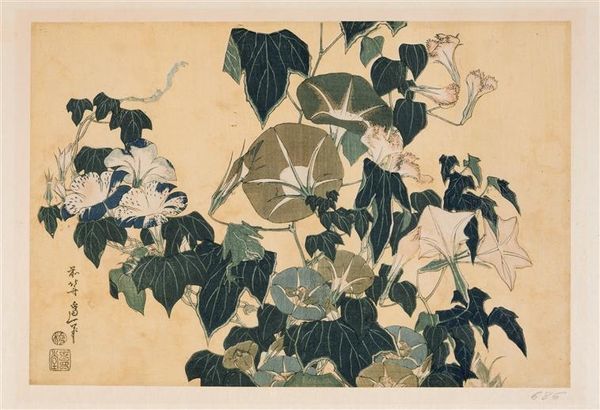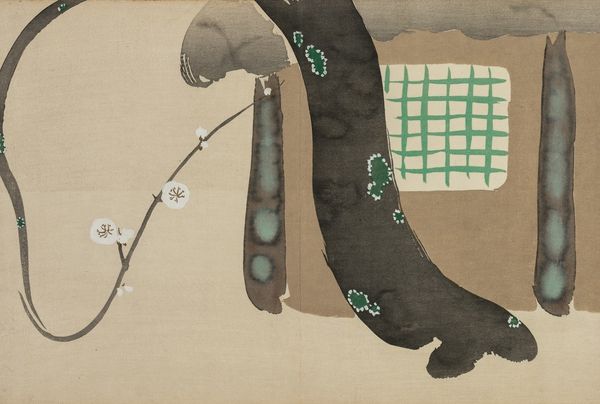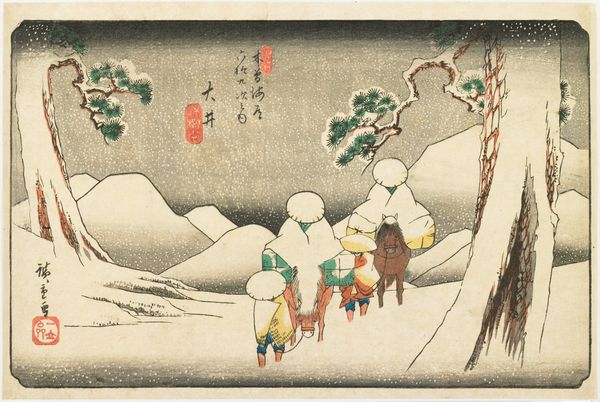
Copyright: Public Domain: Artvee
Curator: Welcome. Let's turn our attention to this enchanting watercolor from around 1909, created by Kamisaka Sekka. It’s entitled "Farming Village in Spring." Editor: First thought? It’s incredibly charming and serene! The muted tones feel so restful. It's like stepping into a dream of a perfect countryside. Curator: Precisely. Note how Sekka, though working with traditional Japanese motifs and techniques rooted in ukiyo-e, adopts certain strategies of the Impressionists. The composition is flat, and simplified, rendering the scene as a sequence of stacked planes. Editor: Yes, there's a lovely graphic quality to the way he flattens perspective! Look at the stylized shapes of those trees, like fluffy clouds clinging to crooked trunks. There's a real whimsicality in how it’s all composed! And how the little stream just meanders through everything... Curator: Indeed, the strategic arrangement of elements invites an examination of spatial relationships, or rather, the subversion of conventional Western notions of receding perspective. The muted palette—the gentle creams and greens and browns—underscores the calm essence of rural existence. Editor: Absolutely. And you can almost smell the earth, the blossoms. The composition uses empty space in a similar way to East Asian scroll paintings. And I adore those tiny windows peeking out from beneath the thatched roofs, adding depth in surprising ways! It makes you imagine people living there, little worlds tucked away. Curator: Yes, Sekka employs negative space deliberately to enhance a sense of peace and to focus attention on essential forms and relationships. The overall effect transcends the simple subject matter. Editor: For me, it is this strange dance between tradition and something strikingly new. Sekka presents what seems familiar but gives us something deeply individual and modern. Curator: Ultimately, what we appreciate here is Sekka’s capacity to reconcile established Japanese painting with progressive tendencies—to bridge those seemingly opposite vocabularies into one unique statement. Editor: Right. This makes you realize that art isn't just about replication. It is how it’s perceived and reconstructed. Curator: Well put. Thanks for sharing these impressions! Editor: My pleasure. I'll dream of tiny windows tonight.
Comments
No comments
Be the first to comment and join the conversation on the ultimate creative platform.

